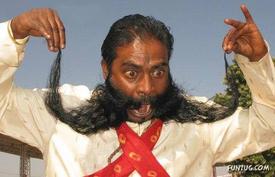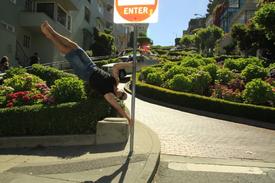What exactly makes fat and muscles

taunto
Posts: 6,420 Member
I'm sure this has been answered but seeing as I don't really know what I'm looking for... I couldn't search for it.
I'm trying to understand what exactly makes fat and what builds muscles. I mean, when we're on a TDEE+ some more diet, while weight lifting, we build muscles and fat? And while on a TDEE - some cals diet, we lose fat and muscles. But what exactly does weight lifting do to make sure that we build mostly muscles and not fat (the bulk and cut process). And why can't I (or can I?) do this while not weight lifting, say, biking or simply running. When I eat too much calories while not doing any workouts (lifting or cardio) I gain mostly fat so what changes do workouts, be it cardio or lifting, do that makes me retain more muscles? Can't only be protein because when I was busy being a fat *kitten*, I was eating plenty of protein!
Sorry if my question isn't very clear. Would appreciate some simple answers and would gladly try and expand on the question to the best of my ability.
I'm trying to understand what exactly makes fat and what builds muscles. I mean, when we're on a TDEE+ some more diet, while weight lifting, we build muscles and fat? And while on a TDEE - some cals diet, we lose fat and muscles. But what exactly does weight lifting do to make sure that we build mostly muscles and not fat (the bulk and cut process). And why can't I (or can I?) do this while not weight lifting, say, biking or simply running. When I eat too much calories while not doing any workouts (lifting or cardio) I gain mostly fat so what changes do workouts, be it cardio or lifting, do that makes me retain more muscles? Can't only be protein because when I was busy being a fat *kitten*, I was eating plenty of protein!
Sorry if my question isn't very clear. Would appreciate some simple answers and would gladly try and expand on the question to the best of my ability.
0
Replies
-
This content has been removed.
-
Hi Taunto.
Not being a smart *kitten*, but I thought food did that. That's as simple as I can make it.
Eating 3,000 calories daily while not working out and being a couch potato: I get fat
Eating 3,000 calories daily while weight lifting (Bulking): I get fat but put on some decent amount of muscle too.
I'm just trying to learn what exactly is the process that helps me put on muscles vs just fat and if its simply to do with lifting or can it be other workouts too like cardio or calisthenics (read: body weight workouts)0 -
This content has been removed.
-
I think you answered.
I must be missing something.
When you use your muscles, they need fuel, so they take it. When you don't use your muscles, they don't need the fuel, so they just let it go.
ok that helps me a bit. I know it might sound like a silly question and I might be having a brain freeze. I just wanted to clear it out.
So essentially, as long as we're working the muscles, they'll keep building as long as they are properly fueled. Obviously heavy lifting makes your muscles work hard so that helps you build muscles fast but even with body weight exercises you can build muscles as long as you hit different muscle groups eh?0 -
Simplistically, energy (calories) needs to be used somehow. It is either used for daily activities, to build muscle, or is stored as fat. In order for it to be used to build muscle, a stimulus needs to be created. Weight lifting does that. Progressive loading is needed in order to continue creating that stimulus otherwise you are in a limbo situation (to a large degree). Cardio does break down muscle and requires protein to rebuild, but does not provide the stimulus needed to increase the size of the muscle.
Not sure if that answers the question or whether you were looking for something more geeky/in depth.0 -
This content has been removed.
-
I think you answered.
I must be missing something.
When you use your muscles, they need fuel, so they take it. When you don't use your muscles, they don't need the fuel, so they just let it go.
ok that helps me a bit. I know it might sound like a silly question and I might be having a brain freeze. I just wanted to clear it out.
So essentially, as long as we're working the muscles, they'll keep building as long as they are properly fueled. Obviously heavy lifting makes your muscles work hard so that helps you build muscles fast but even with body weight exercises you can build muscles as long as you hit different muscle groups eh?
You need progressive loading to build muscle otherwise you are just maintaining.0 -
Simplistically, energy (calories) needs to be used somehow. It is either used for daily activities, to build muscle, or is stored as fat. In order for it to be used to build muscle, a stimulus needs to be created. Weight lifting does that. Progressive loading is needed in order to continue creating that stimulus otherwise you are in a limbo situation (to a large degree). Cardio does break down muscle and requires protein to rebuild, but does not provide the stimulus needed to increase the size of the muscle.
Not sure if that answers the question or whether you were looking for something more geeky/in depth.
Definitely not looking for a geeky reply. I donot understand biochemistry very well so this was the perfect simplicity.
so essentially, if I ONLY do cardio, even if I eat more than my TDEE, I won't be building muscles. Even the muscles that I'm using (example, using legs while only running). Right?
Also, whats the stimulus that you're referring to?
Also, what do you mean progressive loading?0 -
What Sara said.
our body will use the energy from food for daily activities. If you are in a surplus then you have more energy and it can be used to build muscle. But that will happen only if your body see it as necessary - if you lift heavy stuff then your body "thinks" you need to get stronger and it will use the energy for building muscle. If you don't challenge your body then it has no need to build extra muscle, so it will store the energy as fat.
compund lifts are the one stimulating body the most, but I think you will gain muscle (less but still some) if you do cardio, as long as it's sprints/hiit kind of training, not long distance, low impact cardio (walking, jogging ect)0 -
What Sara said.
our body will use the energy from food for daily activities. If you are in a surplus then you have more energy and it can be used to build muscle. But that will happen only if your body see it as necessary - if you lift heavy stuff then your body "thinks" you need to get stronger and it will use the energy for building muscle. If you don't challenge your body then it has no need to build extra muscle, so it will store the energy as fat.
compund lifts are the one stimulating body the most, but I think you will gain muscle (less but still some) if you do cardio, as long as it's sprints/hiit kind of training, not long distance, low impact cardio (walking, jogging ect)
Perfect reply!
So glad for this group. This would've been a nightmare on the main forums
Thank you!0 -
Simplistically, energy (calories) needs to be used somehow. It is either used for daily activities, to build muscle, or is stored as fat. In order for it to be used to build muscle, a stimulus needs to be created. Weight lifting does that. Progressive loading is needed in order to continue creating that stimulus otherwise you are in a limbo situation (to a large degree). Cardio does break down muscle and requires protein to rebuild, but does not provide the stimulus needed to increase the size of the muscle.
Not sure if that answers the question or whether you were looking for something more geeky/in depth.
Definitely not looking for a geeky reply. I donot understand biochemistry very well so this was the perfect simplicity.
so essentially, if I ONLY do cardio, even if I eat more than my TDEE, I won't be building muscles. Even the muscles that I'm using (example, using legs while only running). Right?
Also, whats the stimulus that you're referring to?
Also, what do you mean progressive loading?
Correct.
Stimulus is basically the progressive loading - your muscles need a challenge in order to grow. Progressive loading is increasing the challenge - either more reps (to a point) or more weight.0 -
Simplistically, energy (calories) needs to be used somehow. It is either used for daily activities, to build muscle, or is stored as fat. In order for it to be used to build muscle, a stimulus needs to be created. Weight lifting does that. Progressive loading is needed in order to continue creating that stimulus otherwise you are in a limbo situation (to a large degree). Cardio does break down muscle and requires protein to rebuild, but does not provide the stimulus needed to increase the size of the muscle.
Not sure if that answers the question or whether you were looking for something more geeky/in depth.
Definitely not looking for a geeky reply. I donot understand biochemistry very well so this was the perfect simplicity.
so essentially, if I ONLY do cardio, even if I eat more than my TDEE, I won't be building muscles. Even the muscles that I'm using (example, using legs while only running). Right?
Also, whats the stimulus that you're referring to?
Also, what do you mean progressive loading?
Correct.
Stimulus is basically the progressive loading - your muscles need a challenge in order to grow.
ok, this clears up almost everything except... when I'm running (example) don't I challenge my leg muscles. So does this means when I'm doing cardio, the muscles being used would gain (or retain) muscles?0 -
This may help (extract from another thread I did) - running is endurance at the extreme end of the scale - i.e. no hypertrophy.
Rep ranges
Different rep ranges cause a different type of stress on the body and it reacts differently to each.
The lower rep range (1 – 5) causes neurological adaptations, which is your body developing its ability to activate muscle fibers by increasing the frequency of neural impulses sent to the brain as well as improving intra- and inter-muscle coordination. Basically it makes you stronger but does has a lesser impact to your muscle mass.
The mid rep range (6 – 12) the impact is more on the metabolic and cellular level where you gain muscle mass but strength gains are not as significant as you would get in the lower rep ranges. This is the general rep range for hypertrophy, or mass gains.
The higher rep ranges (13+) stimulate muscle endurance primarily with only a small amount of hypertrophy and very little strength and as such is not considered strength training in the strict sense of the word.
Note, that there is no hard and fast line between the effects of the above, but rather a continuum. Also, the number of sets plays into how much is strength v hypertrophy v endurance. For example, you can do 5 sets of 6 reps for a total of 30 lifts, or you can do 10 sets of 3 lifts for a total of 30 lifts. If you do them to an equivalent level of failure, the time under tension will be the same. The number of sets does not automatically turn it from strength to hypertrophy due to the rest periods between sets, but it does have a bearing on where in the continuum the routine lies.
So, in summary:
1 – 5 reps = strength
6 – 12 reps = hypertrophy
12+ = endurance
So, the appropriate rep ranges really depend on your goals as well as your overall lifting program. Most ‘standard’ programs focus on the upper end of the strength range so benefits of both strength and some hypertrophy are gained.0 -
This is a reasonable start:
https://en.wikipedia.org/wiki/Muscle_growth0 -
Simplistically, energy (calories) needs to be used somehow. It is either used for daily activities, to build muscle, or is stored as fat. In order for it to be used to build muscle, a stimulus needs to be created. Weight lifting does that. Progressive loading is needed in order to continue creating that stimulus otherwise you are in a limbo situation (to a large degree). Cardio does break down muscle and requires protein to rebuild, but does not provide the stimulus needed to increase the size of the muscle.
Not sure if that answers the question or whether you were looking for something more geeky/in depth.
Definitely not looking for a geeky reply. I donot understand biochemistry very well so this was the perfect simplicity.
so essentially, if I ONLY do cardio, even if I eat more than my TDEE, I won't be building muscles. Even the muscles that I'm using (example, using legs while only running). Right?
Also, whats the stimulus that you're referring to?
Also, what do you mean progressive loading?
Correct.
Stimulus is basically the progressive loading - your muscles need a challenge in order to grow.
ok, this clears up almost everything except... when I'm running (example) don't I challenge my leg muscles. So does this means when I'm doing cardio, the muscles being used would gain (or retain) muscles?
Yes with a caveat, running (depending what your starting point is) will develop and maintain leg muscle. But if you do a lot of cardio and are in a deficit it will be counter productive because you can't repair and build well at a deficit. Also, the muscle volume being built will be functionally balanced - you will strengthen and build what is being used while muscle wasting can occur at other sites if local protein needs are higher in your legs. If you have very developed legs from WT or other activities running will impact that and stress muscle development differently - gain and loss are seen in elite training when a cyclist, for example, takes on running.
Also, remember that a lot of strength or developmental gains (speed, endurance) are more related to neurological adaptation. In general, you will not see the effective hypertrophy possible with WT while running or cycling. The volume of activity or effort is limiting. WT is more efficient.
Finally, (repeat and underline) WT is more efficient if you want to do progressive loading than other activity but, as an example, certainly mountain biking will build up your gluteus maximus.0 -
^^yep. I oversimplified it for...well, simplicity's sake. However, for example, if I were in an alternate reality and started running, I may see some muscle gains as I would be providing more/different stimulus than my legs are used to. It is why for example hill sprints can help build muscle as 'extra' stimulus is being provided. Generally, steady state cardio does not provide that stimulus after the first phase of adaptation.0
-
Slight tangent:
To do your own research on the different types of muscle, and how they react in certain situations look into "slow-twitch" and "fast-twitch" muscles. Slow (red meat) is primarily for endurance, while fast (red/white meat depending on the type) is primarily for speed and strength.
This explains why a sprinter can't run long and a marathoner can't run short. It's the same concept with Sara's rep comparison. The more reps you do at lower weight the more reps at lower weight you'll be able to do, and the more weight at lower reps you do the heavier you'll be able to lift.
https://en.wikipedia.org/wiki/Muscle_tissue#Skeletal_muscle
If you want to look into it further (and pretty much geek our on myoblasts and ATP) I would suggest following the "Skeletal striated muscle" link.0 -
Just get really angry0
-
Specific Adaptation to Imposed Demands (SAID).
Weight training forces your body to adapt to the stress provided. This is done by both increasing the efficiency of your brain to muscle connection and by building more muscle using the raw material provided (food).
That's why progressive overload is so important as it continues to force your body to adapt.0 -
Just get really angry
Took me a minute..but lol.0 -
Good article/interview here:
http://www.burnthefatblog.com/archives/2012/11/what-makes-muscles-grow.php0 -
I hope what I'm going to say fits here:)
I ran with a woman who is 75 years old this year and we had lots of chats. She has been a runner for mor that forty years and is just starting to slow down ( hence she chose me for a running partner).
She told me her method for training for marathons back in the day: For the first half of training she would eat to maintain her weight. For the last half of training she would eat at a surplus. She said that she did this to increase the strength of her fast-twitch muscles while training and she got her best times in races when she used this method.
Btw, I love what I'm learning here mixed with personal experience<30 -
Just get really angry
Took me a minute..but lol.
Taking me longer than a minute, I still don't get it and it's doing my nut in, lol.0 -
Just get really angry
Took me a minute..but lol.
Taking me longer than a minute, I still don't get it and it's doing my nut in, lol.
LOL. Taunto's ticker is a good clue
Really interesting topic! I feel kind of dumb asking this, but I was wondering something related (maybe). So I eat roughly 100 g of protein per day, which comes to about 1.5 lbs of protein per week, right? So I'm guessing that in a surplus, some but not all of that would go to building muscle. In a deficit, some but not all of it goes to maintaining muscle? And the rest...? Just waste? Essential bodily functions? Other stuff? :laugh: Ok I know it's silly but I've been pondering that. I mean I know I'm certainly not gaining 1.5 lbs of muscle per week in a surplus and especially not in a deficit and I know that those little grams of protein don't magic themselves into muscle even with exercise. I think I need a class on digestion...0 -
 0
0 -
Just get really angry
Took me a minute..but lol.
Taking me longer than a minute, I still don't get it and it's doing my nut in, lol.
LOL. Taunto's ticker is a good clue
Really interesting topic! I feel kind of dumb asking this, but I was wondering something related (maybe). So I eat roughly 100 g of protein per day, which comes to about 1.5 lbs of protein per week, right? So I'm guessing that in a surplus, some but not all of that would go to building muscle. In a deficit, some but not all of it goes to maintaining muscle? And the rest...? Just waste? Essential bodily functions? Other stuff? :laugh: Ok I know it's silly but I've been pondering that. I mean I know I'm certainly not gaining 1.5 lbs of muscle per week in a surplus and especially not in a deficit and I know that those little grams of protein don't magic themselves into muscle even with exercise. I think I need a class on digestion...
Amino acids are used for things other than muscle building - they are used for cell repair. Also, they can be converted into glucose via a process called gluconeogenesis.
The amount of actual muscle that can be build daily is in the grams.0 -
Relating to this topic is partitioning ratio. This is the amount of muscle/fat gained in surplus and the amount of muscle/fat lost in deficit. Some people have great genes and can add muscle easily and lose predominantly fat. Others, not so lucky. The amount of calories eaten above or below TDEE will greatly influence the P ratio as well. An example of a not so good P ratio would be someone who is insulin resistant bulking and eating say 50% over maintenance calories predominantly from carbs. As Sara said, the amount of muscle growth is very limited (genes, training age, gender, "supplements" will affect this amount) and surpluses above what is used for muscle growth will predominantly go towards fat storage.0
This discussion has been closed.








